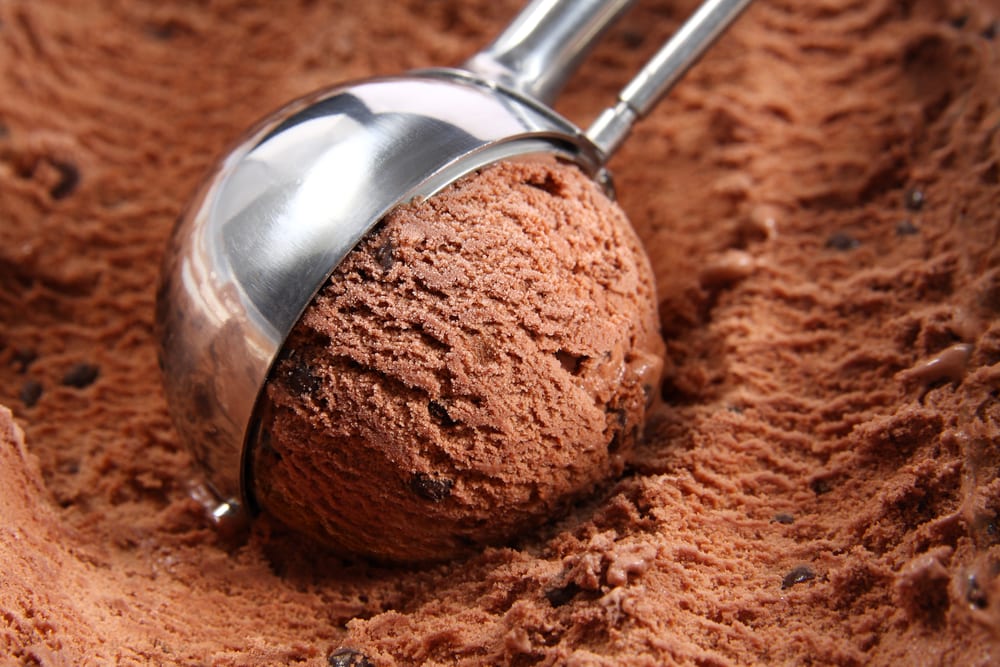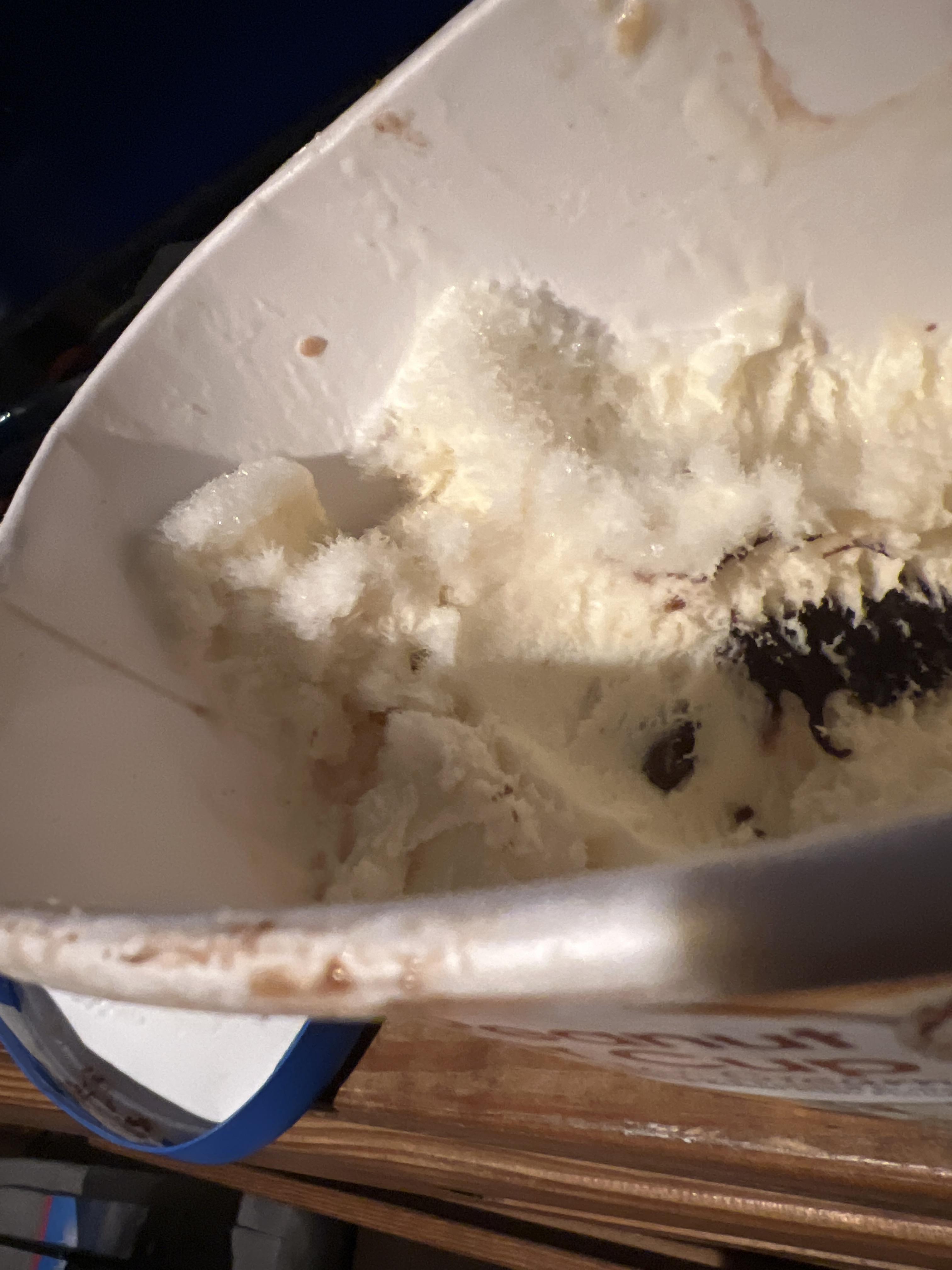Introduction

Introduction:
Ice cream is a beloved treat enjoyed by people of all ages. However, it is important to understand that even ice cream can go bad. While it may not spoil as quickly as some other food items, factors such as temperature fluctuations, introduction of bacteria and molds, and improper storage can all contribute to ice cream spoilage. This article aims to provide insights into understanding ice cream spoilage, signs of spoiled ice cream, proper storage techniques, common causes of ice cream spoilage, and tips for preventing ice cream from going bad. By following proper handling and storage practices, you can ensure the longevity and quality of your ice cream.
Understanding Ice Cream Spoilage And Why It Can Go Bad
Ice cream is a perishable food item that can spoil over time. Spoilage occurs due to various factors such as temperature fluctuations, introduction of bacteria and molds, and improper storage. When ice cream is repeatedly thawed and refrozen, it can undergo texture and consistency changes, resulting in a degraded quality. Additionally, the presence of bacteria and molds can lead to off-putting smells and flavors. It is important to understand these factors to ensure proper handling and storage practices, and to enjoy ice cream at its best quality.
Factors That Contribute To Ice Cream Spoilage
Factors that contribute to ice cream spoilage include temperature fluctuations, the introduction of bacteria and molds, and improper storage. Ice cream is a delicate product, and changes in temperature can affect its quality. Fluctuations between freezing and thawing can result in textural changes and the formation of ice crystals. Additionally, exposure to bacteria and molds can lead to contamination and spoilage. Improper storage, such as leaving the ice cream out at room temperature for extended periods or not sealing the container tightly, can also accelerate spoilage. It is essential to handle and store ice cream properly to prevent these factors from compromising its quality.
Signs Of Spoiled Ice Cream

Spoiled ice cream can exhibit several noticeable signs that indicate it is no longer safe to consume. One common sign is the presence of tiny ice shards on top of the ice cream and under the lid. This is an early indication of the formation of ice crystals, which can affect the texture and consistency of the ice cream. As spoilage progresses, the ice cream may become gooey and develop a icy, grainy texture. Additionally, off-putting smells and flavors, such as a sour or rancid odor, can be a clear indication that the ice cream has gone bad. It is important to discard any ice cream that shows these signs of spoilage to avoid any potential foodborne illness. [5]
Texture And Consistency Changes In Spoiled Ice Cream
Spoiled ice cream can undergo noticeable texture and consistency changes, which serve as clear indicators of its deterioration. The ice cream may become too hard, icy, or develop an uneven texture. Instead of being smooth and creamy, it can become grainy or lumpy. This change in texture can make the ice cream unpleasant to eat and significantly affect the overall quality and enjoyment of the dessert. Therefore, it is crucial to discard any ice cream that exhibits these texture and consistency changes to prevent any potential foodborne illness. [7]
Off-putting Smells And Flavors Indicating Spoilage
Spoiled ice cream can emit off-putting smells and flavors, serving as clear indicators of its deterioration. The ice cream may develop a sour or rancid odor, which is a strong sign of spoilage. Additionally, if it tastes off or has a strange, unpleasant flavor, it is best to discard it. These unpleasant smells and flavors can be caused by the growth of bacteria, mold, or other contaminants in the ice cream. Consuming spoiled ice cream can potentially lead to foodborne illnesses, so it is important to trust your senses and avoid consuming ice cream that exhibits these signs of spoilage. [10]
Storage And Shelf Life

Proper storage techniques play a crucial role in maintaining the shelf life of ice cream. It is recommended to store ice cream in a freezer set at a constant temperature of -18°C (0°F) or lower to prevent any fluctuations that could lead to texture changes or freezer burn. Additionally, it is important to tightly seal the container to minimize air exposure. As for the shelf life, commercially packaged ice cream typically has a recommended expiration date of about 2 to 3 months from the production date, while homemade ice cream should be consumed within 1 to 2 weeks for optimal quality.
Proper Storage Techniques For Ice Cream
Proper storage techniques play a crucial role in maintaining the shelf life of ice cream. It is recommended to store ice cream in a freezer set at a constant temperature of -18°C (0°F) or lower to prevent any fluctuations that could lead to texture changes or freezer burn. Additionally, it is important to tightly seal the container to minimize air exposure. This helps to preserve the original taste and texture of the ice cream. Avoid storing ice cream near the freezer door or in areas with frequent temperature changes. By following these storage guidelines, you can ensure that your ice cream stays fresh and delicious for longer periods of time.
Recommended Shelf Life For Different Types Of Ice Cream
The recommended shelf life for different types of ice cream can vary depending on factors such as the ingredients used and the presence of preservatives. Generally, commercially packaged ice cream can last for about 2-3 months in the freezer if unopened. However, once opened, it is best to consume it within 1-2 weeks to maintain optimal flavor and texture. Homemade ice cream, without the use of preservatives, may have a shorter shelf life of about 1-2 weeks in the freezer. It is important to always check the expiration date on the packaging and consume the ice cream before it goes bad.
Common Causes Of Ice Cream Spoilage

Ice cream spoilage can be caused by various factors, including temperature fluctuations and the introduction of bacteria and molds. When ice cream is exposed to fluctuating temperatures, such as repeated thawing and refreezing, it can lead to changes in texture and quality. Additionally, if ice cream is not handled and stored properly, it can become contaminated with bacteria and molds, which can cause spoilage. It is important to store ice cream at a consistent temperature and follow good hygiene practices to prevent these common causes of ice cream spoilage.
Temperature Fluctuations And Effects On Ice Cream Quality
Temperature fluctuations can have a significant impact on the quality of ice cream. When ice cream is repeatedly exposed to thawing and refreezing, it can lead to changes in texture and consistency. The repeated melting and freezing can cause ice crystals to form, resulting in a grainy or icy texture. Additionally, temperature fluctuations can affect the flavor of the ice cream, making it taste bland or off. It is important to store ice cream at a consistent temperature to maintain its quality and avoid these negative effects. [19]
Introduction Of Bacteria And Molds Leading To Spoilage
Bacteria and molds can easily contaminate ice cream and lead to spoilage. When ice cream is exposed to warm temperatures or improper storage conditions, it creates an ideal environment for these microorganisms to grow. Bacteria can cause unpleasant odors, off flavors, and even foodborne illnesses if consumed. Molds, on the other hand, can create visible spots or discoloration on the surface of the ice cream. To prevent this, it is essential to handle ice cream hygienically, avoid cross-contamination, and store it properly at the recommended temperature. Regularly cleaning and sanitizing storage containers and equipment also helps prevent the introduction of harmful bacteria and molds. [22]
Preventing Ice Cream Spoilage

To prevent ice cream spoilage, it is important to follow some best practices. Here are a few tips:
- Keep it cold: Store ice cream at the recommended temperature of -18°C (0°F) in your freezer to maintain its quality and texture.
- Limit exposure: Avoid frequently opening and closing the container, as it can lead to temperature fluctuations and the formation of ice crystals.
- Proper packaging: Use airtight containers or wrap the container tightly with plastic wrap to prevent air exposure and freezer burn.
- Organize your freezer: Ensure that your freezer is clean and well-organized, with ice cream stored away from other pungent or strong-smelling foods to prevent cross-contamination of odors.
- Follow expiration dates: Pay attention to the expiration dates on the packaging and consume the ice cream before they expire to enjoy it at its best quality.
By following these guidelines, you can prolong the shelf life of your ice cream and enjoy it without worrying about spoilage.
Tips For Preventing Ice Cream From Going Bad
- Keep it cold: Store ice cream at the recommended temperature of -18°C (0°F) in your freezer to maintain its quality and texture.
- Limit exposure: Avoid frequently opening and closing the container, as it can lead to temperature fluctuations and the formation of ice crystals.
- Proper packaging: Use airtight containers or wrap the container tightly with plastic wrap to prevent air exposure and freezer burn.
- Organize your freezer: Ensure that your freezer is clean and well-organized, with ice cream stored away from other pungent or strong-smelling foods to prevent cross-contamination of odors.
- Follow expiration dates: Pay attention to the expiration dates on the packaging and consume the ice cream before they expire to enjoy it at its best quality.
Proper Handling And Storage Practices For Ice Cream
To ensure the longevity and quality of your ice cream, it is important to follow proper handling and storage practices. Here are some tips to keep in mind:
- Keep it cold: Store ice cream at the recommended temperature of -18°C (0°F) in your freezer to maintain its quality and texture.
- Limit exposure: Avoid frequently opening and closing the container, as it can lead to temperature fluctuations and the formation of ice crystals.
- Proper packaging: Use airtight containers or wrap the container tightly with plastic wrap to prevent air exposure and freezer burn.
- Organize your freezer: Ensure that your freezer is clean and well-organized, with ice cream stored away from other pungent or strong-smelling foods to prevent cross-contamination of odors.
- Follow expiration dates: Pay attention to the expiration dates on the packaging and consume the ice cream before they expire to enjoy it at its best quality.
By following these simple practices, you can extend the shelf life of your ice cream and enjoy it at its delicious best. [27] [28]
Conclusion

In conclusion, it is important to understand that ice cream can indeed go bad. Factors such as temperature fluctuations, exposure to air, and the introduction of bacteria and molds can contribute to ice cream spoilage. It is crucial to store ice cream properly at the recommended temperature and consume it before the expiration date for optimal quality. By following proper handling and storage practices, you can extend the shelf life of your ice cream and enjoy it at its delicious best.
Understanding Ice Cream Spoilage And Maintaining Its Quality
Ice cream spoilage can occur due to various factors such as temperature fluctuations and the introduction of bacteria and molds. Understanding these factors is crucial in maintaining the quality of ice cream. By storing ice cream at the recommended temperature and consuming it before the expiration date, you can ensure its optimal taste and texture. It is also important to handle and store ice cream properly to prevent contamination and extend its shelf life. By following these practices, you can enjoy your ice cream at its best and avoid any potential spoilage issues.
FAQs About Ice Cream Spoilage And Storage
- Can ice cream go bad if it melts and refreezes?
Yes, repeatedly melting and refreezing ice cream can affect its texture and quality. Ice crystals can form, leading to a grainy consistency.
- How long does ice cream last in the freezer?
The shelf life of ice cream varies depending on the type and storage conditions. Generally, it is recommended to consume ice cream within 2-3 months for optimal quality.
- Can you store ice cream in the refrigerator?
No, it is not recommended to store ice cream in the refrigerator. The temperature fluctuations can cause freezer burn and affect the taste and texture of the ice cream.
- How can I prevent freezer burn on ice cream?
To prevent freezer burn, make sure to seal the ice cream container tightly to minimize exposure to air. Additionally, store the ice cream in the coldest part of the freezer, away from the door.
- Can I still eat ice cream after the expiration date?
While it is generally safe to consume ice cream shortly after the expiration date, it is best to follow the manufacturer’s recommendations. If the ice cream shows signs of spoilage, such as an off-putting odor or flavor, it is better to discard it.
Remember to always follow proper storage practices and check for signs of spoilage to enjoy your ice cream at its best.
Frequently Asked Questions: Can Ice Cream Go Bad?
Q1: Can ice cream spoil or go bad?
A1: Yes, ice cream can spoil or go bad over time if it is not stored properly or if it exceeds its recommended shelf life.
Q2: How long does ice cream last?
A2: The shelf life of ice cream varies depending on various factors such as the ingredients used, manufacturing process, and storage conditions. Generally, unopened ice cream can last for several months in the freezer, while opened ice cream should be consumed within a few weeks for optimal quality.
Q3: How can I tell if ice cream has gone bad?
A3: There are several signs that ice cream may have spoiled, including an off smell, unusual texture (e.g., grainy or icy), mold growth, or a change in color. If you notice any of these signs, it’s best to discard the ice cream.
Q4: Is it safe to eat ice cream after the expiration date?
A4: Consuming ice cream after its expiration date is not recommended, as the product’s quality and safety may be compromised. It’s better to follow the recommended shelf life and consume it before the expiration date to enjoy the best flavor and texture.
Q5: How should ice cream be stored to maximize its shelf life?
A5: To maximize the shelf life of ice cream, it should be stored in the freezer at a temperature of 0°F (-18°C) or below. It is important to keep the container tightly sealed to prevent the formation of ice crystals and to avoid exposure to air, which can cause freezer burn.
Q6: Can refreezing melted ice cream affect its quality?
A6: Refreezing melted ice cream can negatively impact its texture and flavor. When ice cream melts and is refrozen, ice crystals can form, leading to a grainy texture. It’s best to avoid refreezing melted ice cream whenever possible.
Q7: Can homemade ice cream go bad?
A7: Homemade ice cream can also go bad if not handled properly. It is essential to store homemade ice cream in airtight containers and follow food safety guidelines. Pay attention to the ingredients used and the recommended storage times to enjoy homemade ice cream at its best.
Q8: Can consuming spoiled ice cream make you sick?
A8: Consuming spoiled ice cream may increase the risk of foodborne illnesses. Bacteria and other pathogens can grow in improperly stored or expired ice cream, potentially causing gastrointestinal issues. It is advisable to discard any ice cream that appears to be spoiled or past its expiration date.
Remember, to ensure the best flavor and quality, always check the expiration date and storage instructions on the ice cream packaging. When in doubt, trust your senses and discard any ice cream that gives off peculiar odors or has visible signs of spoilage.

Soo Good Snack Bar is an upscale snack shop located at 1309 Hermosa Ave. in Hermosa Beach, CA. This family-owned business is the newest addition to the community of Hermosa, and our goal is to create a fun and inviting place where families can enjoy delicious snack foods that fit the beach lifestyle. Check us out today and help yourself to happiness.
